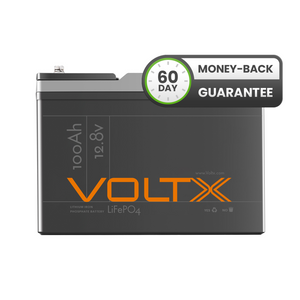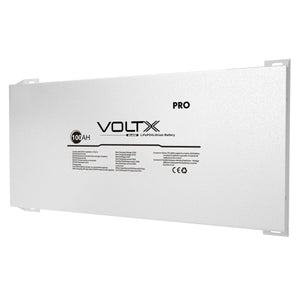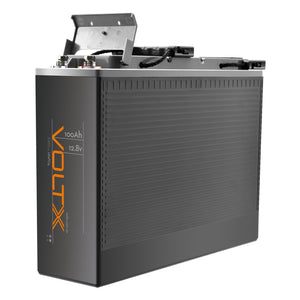Choosing a charger for you 12v 100ah battery: Although a battery charger has no control over a battery's depth of discharge, discharge current and battery temperature, all of which affect battery life, many chargers have features that can increase battery life. A battery charger's role in extending battery lifetime is mainly determined by the charger's float voltage and charge termination method.
Many Li-ion chargers feature a ±1% (or lower) fixed float voltage of 4.2 V, but there are some offerings in 4.1 V and 4 V, as well as adjustable float voltages. Using battery chargers that feature a reduced float voltage can increase battery life when used to charge a 4.2-V Li-ion battery.
Battery chargers that do not offer lower float-voltage options are also capable of increasing battery life. Chargers that provide minimum charge-current termination methods (C/10 or C/x) can provide a longer battery life by selecting the correct charge-current level at which to end the charge cycle.
A C/10 termination level will only bring the battery up to about 92% capacity, but there will be an increase in cycle life. A C/5 termination level can double the cycle life although the battery charge capacity drops even further to approximately 85%. A number of charger ICs provide either a C/10 (10% current threshold) or C/x (adjustable current threshold) charge termination mode.
Run-Time Versus Battery Life
With present battery technology and without increasing battery size, you can't get both longer run-time and longer battery life. For maximum run-time, the charger must charge the battery to 100% capacity. This places the battery voltage near the manufacturer's recommended float voltage, which is typically 4.2 V ±1%. Unfortunately, charging and maintaining the battery near these levels shortens battery life. One solution is to select a lower float voltage, which prohibits the battery from achieving 100% charge, although this would require a higher-capacity battery to provide the same run-time. Of course, in many portable products, a larger-size battery may not be an option.
Also, using a C/10 or C/x minimum charge-current termination method can have the same effect on battery life as using a lower float voltage. Reducing the float voltage by 100 mV will reduce capacity by approximately 15%, but can double the cycle life. At the same time, terminating the charge cycle when the charge current has dropped to 20% (C/5) also reduces the capacity by 15% and achieves the same doubling of cycle life.
As expected, during discharge, the battery voltage will slowly drop. The discharge voltage profile versus time depends on a number of factors, including discharge current, battery temperature, battery age and the type of anode material used in the battery. Presently, most Li-ion batteries use either a petroleum-based coke material or graphite.
The more widely used graphite material produces a flatter discharge voltage between 20% and 80% capacity, then drops quickly near the end, whereas the coke anode has a steeper voltage slope and a lower 2.5-V cutoff voltage. The approximate remaining battery capacity is easier to determine with a coke material by simply measuring the battery voltage.
For increased capacity, Li-ion cells are often connected in parallel. No special requirements are needed, other than the batteries should be the same chemistry, manufacturer and size. Series-connected cells require more care because cell-capacity matching and cell-balancing circuitry are often required to assure that each cell reaches the same float voltage and the same level of charge.
Connecting two cells (that have individual pack-protection circuitry) in series is not recommended because a mismatch in capacity could result in one battery reaching the overvoltage limit, thus opening the battery connection. Multi-cell battery packs should be purchased assembled with the appropriate protection circuitry from the battery manufacturer.




